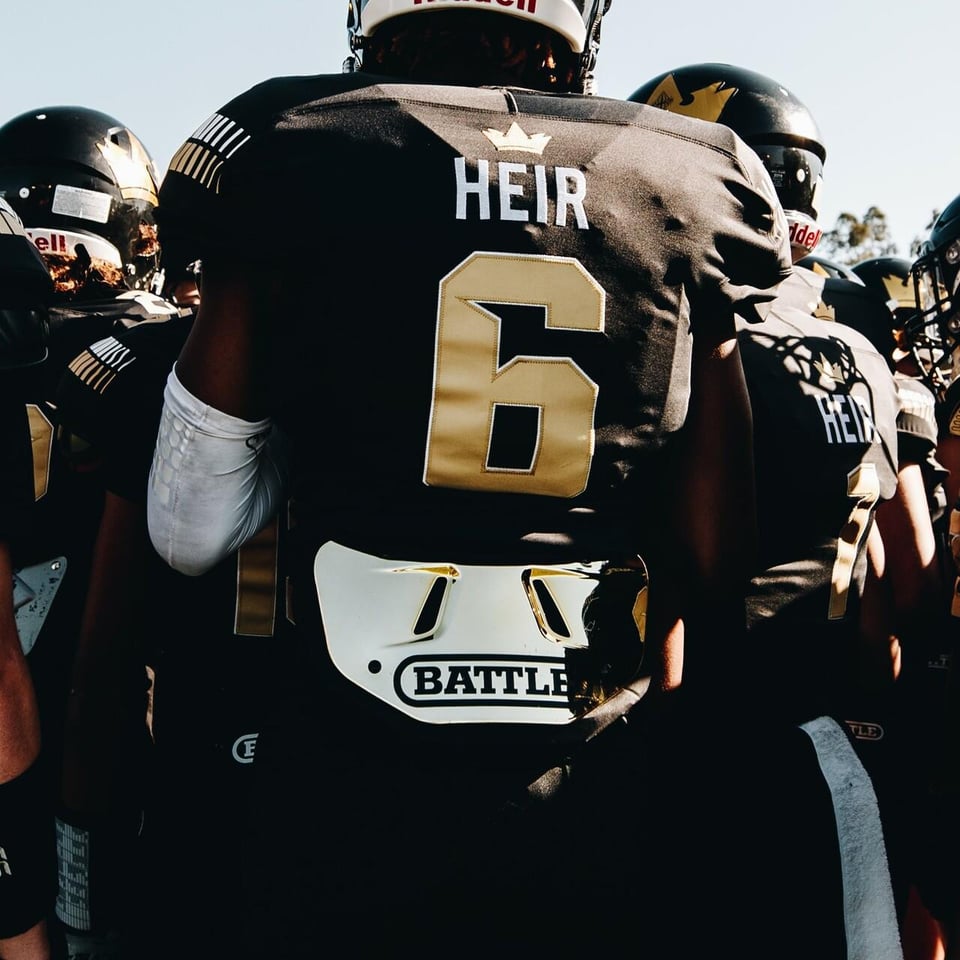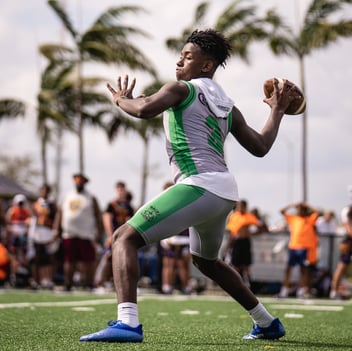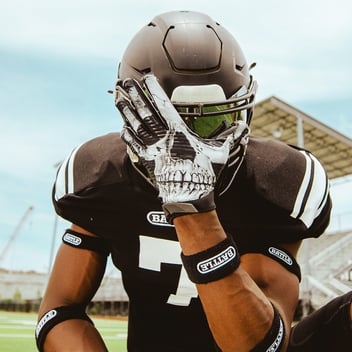Evolution of Football Equipment: Look at the Past, Present, and Future of Football Gear

Football is a sport that has evolved significantly over the years. From the earliest days of the game, when players wore little to no protective gear, to the present day, when players wear state-of-the-art equipment designed to keep them safe and perform at their best, football gear has come a long way. In this blog post, we'll take a look at the past, present, and future of football equipment, and how it has changed to meet the needs of players and the game itself.
The Past:
Football equipment has come a long way since the earliest days of the game. In the late 19th and early 20th centuries, players wore little to no protective gear. Shoulder pads, back plates and other forms of protection were not yet in use. The players' uniform consisted of a jersey, pants, and cleats. The football jerseys were made of heavy wool and the pants were made of leather. In the past, football cleats were made of leather and had metal spikes.
Football jerseys had no padding and were not designed to wick away moisture, which made them uncomfortable to wear in hot weather. The pants were made of leather and did not have any padding to protect the hips, thighs, and knees.
The Present:
Today, football equipment is designed to keep players safe and perform at their best. Helmets, shoulder pads, and other forms of protection are now standard equipment for players at all levels of the game. Modern football jerseys are made of lightweight and breathable materials, such as polyester and nylon, that wick away moisture and help keep football players cool while playing. Football pants are made of similar materials and are often reinforced with padding to protect the hips, thighs, and knees. While compression pants provide support and compression to the muscles in the legs to improve blood flow and reduce muscle fatigue for football players. Cleats are now made of synthetic materials, such as plastic and rubber, and have molded studs for better traction on the field.
Football is a sport that requires a lot of gear designed to keep players safe and perform at their best. Over the years, as the game has become more physical and the speed of play increased, the need for better protective gear for football players has become apparent. In the early 20th century, leather helmets were introduced to provide some protection for the head and brain. However, today’s football helmets are much more advanced with a face mask and provide more protection for the players.
The Future:
As technology continues to advance, we at Battle expect to see even more changes in football equipment in the future. Researchers are currently working on developing new materials and designs for football helmets that will provide even better protection for players. Additionally, there is ongoing research into developing new forms of padding and other protective gear that will reduce the risk of injury.
Technology is constantly advancing and has the potential to greatly impact the future of football equipment. Some of the ways technology could impact the future of football equipment include:
- Smart Helmets: With the integration of sensors and other technology, smart helmets could track and monitor the number and severity of head impacts a player experiences during a game or practice. This could help to identify players who are at risk of a concussion and allow for prompt medical attention.
- Biometric Monitoring: Technology such as wearables and sensors could be integrated into football equipment, like football mouthguards, to monitor a player's vital signs, such as heart rate, body temperature, and hydration levels. This kind of wearable technology could help coaches and trainers to identify players who are at risk of injury or fatigue and adjust their training and playing time accordingly.
- Enhanced Materials: Advances in materials science could lead to the development of new and improved football equipment. For example, new materials could be developed that are even more lightweight and protective than current materials, providing better mobility, comfort, and safety for players.
- Virtual and Augmented Reality: Virtual and augmented reality technology could be used to train players ultimately allowing them to practice plays and scenarios in a simulated environment. This could help players to develop better skills and strategies without contact and help coaches to identify areas where players need to improve.
- 3D Printing: 3D printing technology could be used in the future to create custom-fit equipment for individual players, taking into account their unique body shape and size. This could help to ensure that players are comfortable and protected while playing.
RELATED: The Ultimate Guide to Football Equipment
Football equipment has significantly evolved over the years, from the earliest days of the game when players wore little to no protective gear, to the present day when players wear state-of-the-art equipment designed to keep them safe and perform at their best. The future of football equipment is looking promising, as technology continues to advance, we can expect to see even more changes in football equipment in the future. The game will continue to evolve and the equipment will adapt to meet the needs of players and the game itself. One thing you can count on is that Battle will continue to have bold apparel and equipment for football players. From mouthguards to back plates to turf tape and football gloves, we create football apparel and equipment that’s just as powerful as your game.



